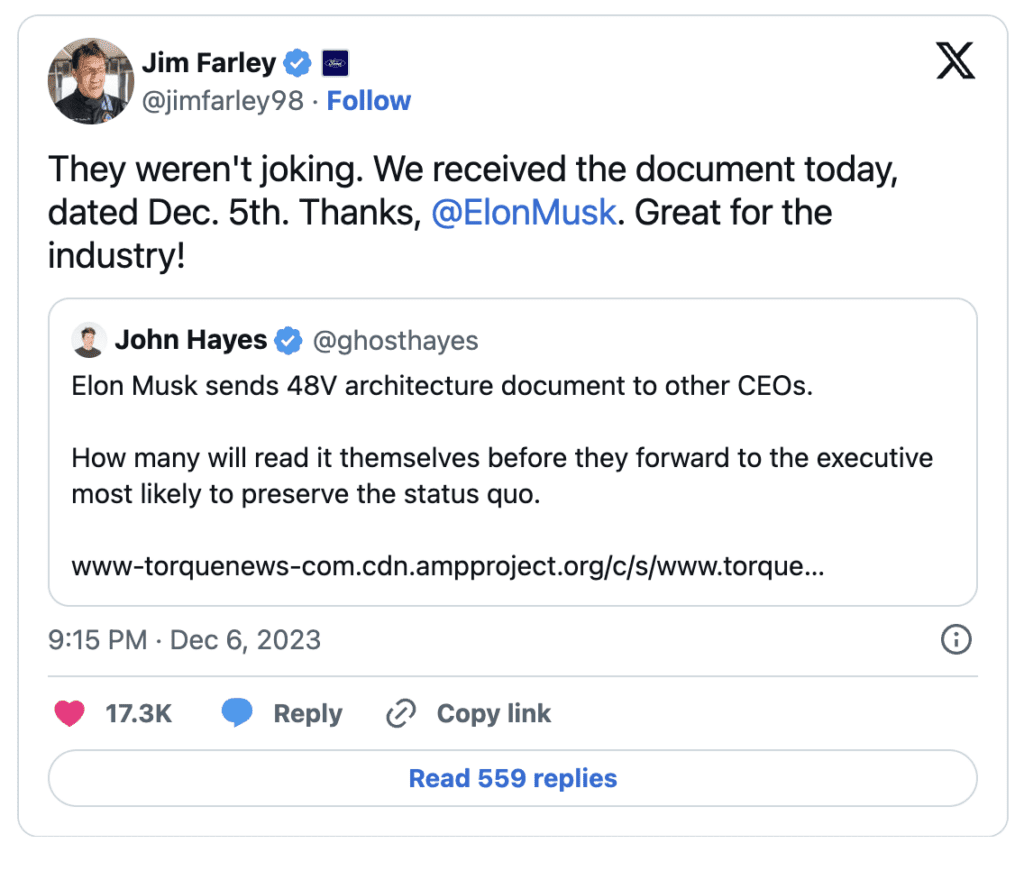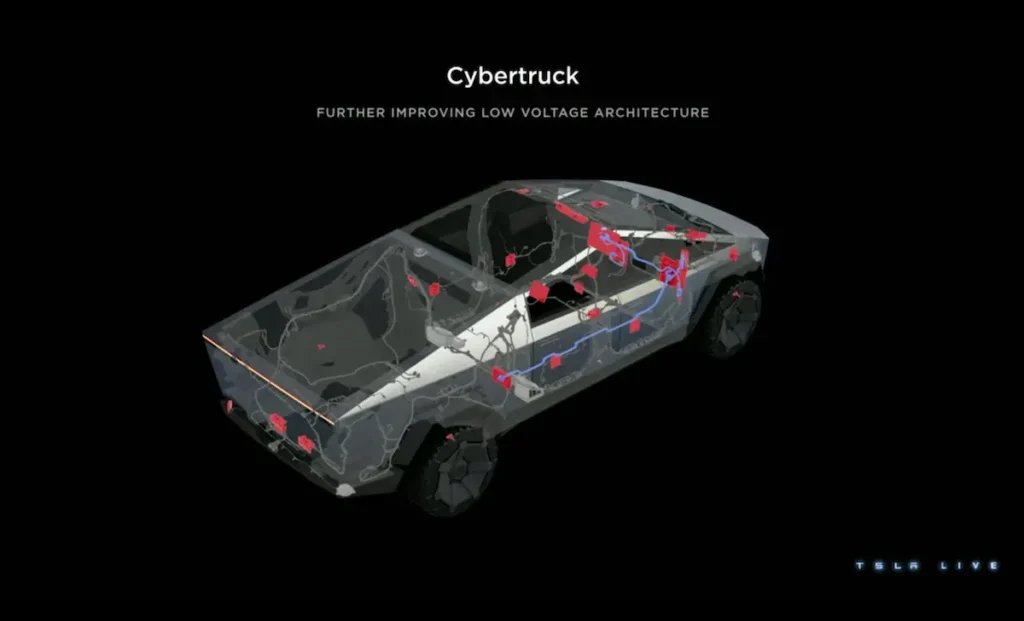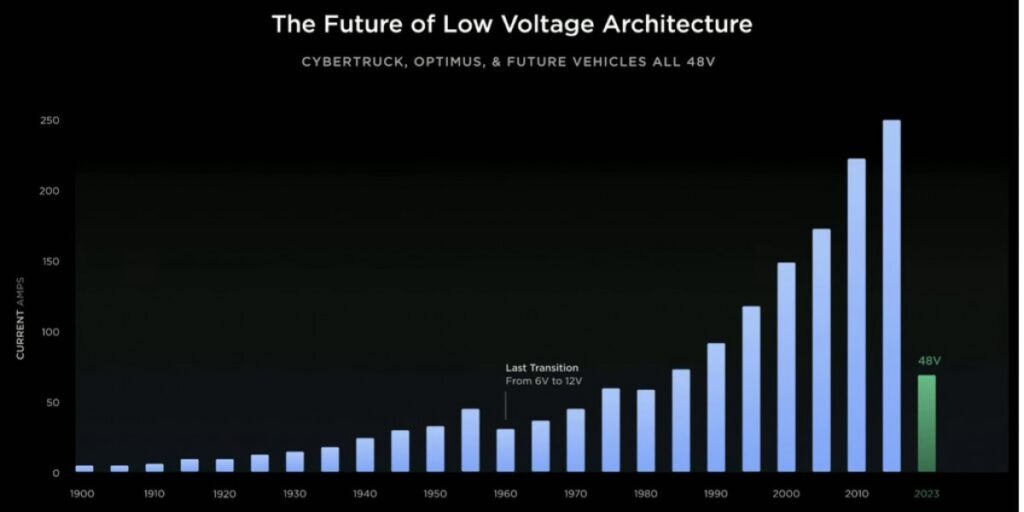As most of the world focuses on the Tesla Cybertruck’s unorthodox looks, automotive geeks are more interested in its voltage architecture. With Cybertruck, Tesla introduced a 48-volt electrical system, and it has now released its 48 V implementation documentation to other major automakers. Ford CEO Jim Farley publicly thanked his counterpart at Tesla for sharing.


All vehicles, whatever their means of propulsion, use a low-voltage system to power accessories such as lights, climate control, etc. By the late 1960s, the auto industry had established 12 V systems as a near-universal standard, allowing suppliers to build components that could work with any car. Back in the days when cars had cigarette lighters, 12 volts seemed like plenty. But as more and more electrically-powered gadgets became indispensable—power windows, GPS, keyless entry, mood lighting, farty noises and on and on—vehicle wiring systems became increasingly massive and complex. In 1948, a typical car contained about 55 wires with a total length of 150 feet, whereas a modern luxury model may contain some 1,500 copper wires with a total length of over a mile, as the Copper Development Association happily informs us.
MORE: A closer look at why EVs still use 12 V lead acid batteries.
Raising the voltage means that the same amount of power can be delivered by a smaller wire, so switching to a 48 V architecture would enable automakers to greatly simplify wiring harnesses, saving space and money (and, sadly for some, using less copper).


The benefits of switching to a 48 V system are substantial, and plain to see. So why aren’t automakers already making the transition? As is often the case with technology, there’s a chicken-and-egg dynamic at work. A vehicle with a 48 V architecture would have to use all 48 V accessories, and suppliers aren’t inclined to develop such accessories without sufficient demand.
And this brings us to the likely reasons that Tesla decided to share its 48 V architecture with competitors. (The company has a history of sharing certain selected technologies “for the good of the industry,” but the industry’s history of adopting said technologies is spotty.)
Switching to 48 V will be a major project for legacy automakers—they could have done so already, without Tesla’s help, if they judged that it would be worth the investment of time and capital. But Tesla’s friendly helping hand, and the publicity that it generates (at least in the automotive trade press) may make the move towards 48 happen more quickly—and this could give the younger automaker a competitive advantage.
As Electrek’s David Ruddock reports, there are a couple of reasons that Tesla may hope to make the switch more smoothly than its rivals (in addition to the fact that it has a head start with Cybertruck). First, Tesla is more vertically integrated than the legacy firms, and has more hands-on control over its supply chain; second, Tesla has far fewer legacy vehicle designs to support. Tesla has every incentive to encourage the competition to start ordering 48 V components too, because that will lower costs for everyone.
Will Ford and others move beyond a polite “thank you,” and start turning up the voltage? We shall see.
Source: Electrek



















































